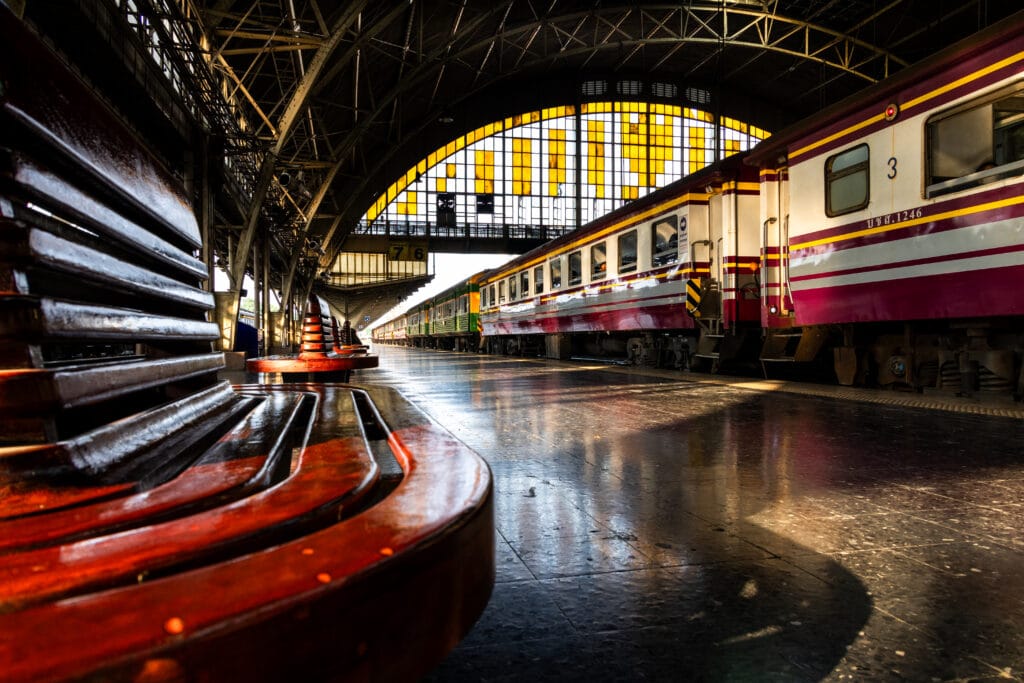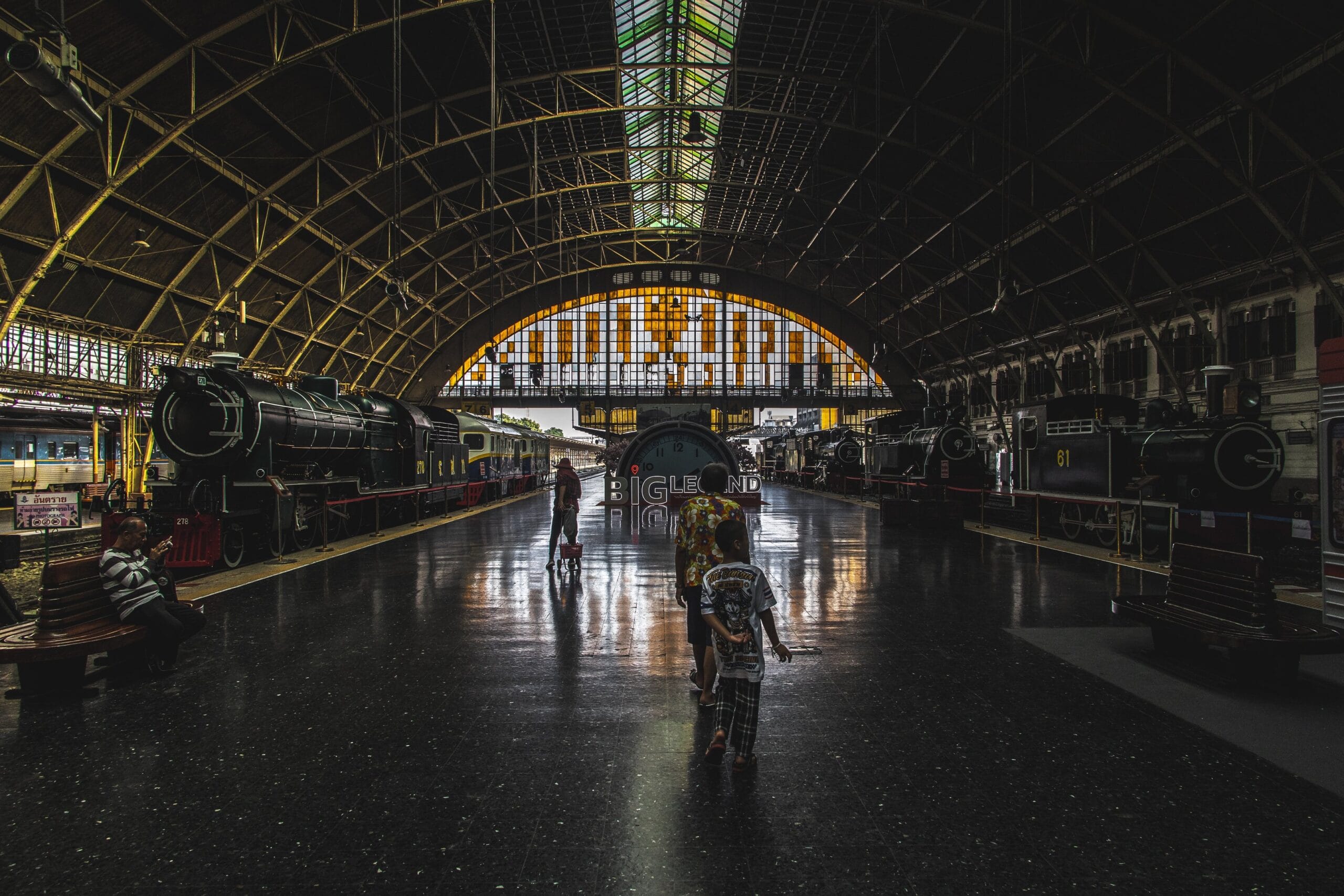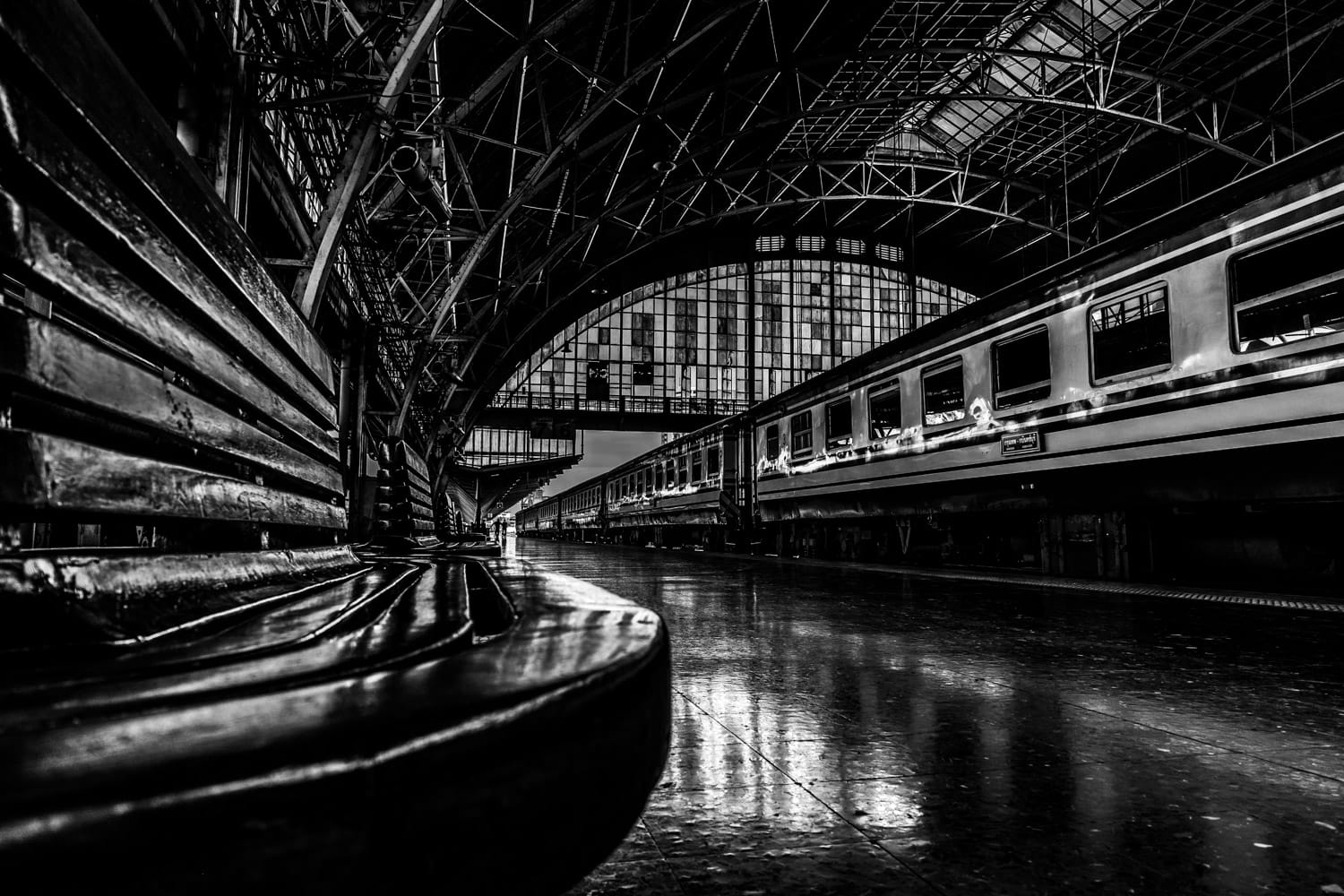Introduction
Stepping into Hua Lamphong Railway Station is like stepping back in time. Once perpetually humming with the energy of arrivals and departures there are now fewer trains after its threatened closure in 2021. This grand old dame of Bangkok’s transportation network isn’t just a transit point; it’s a living, breathing testament to a bygone era of travel, a place where the romance nostalgia of rail still clings to the high, arched ceilings and the echoing announcements.
Sunlight streams through the vast, stained-glass windows in the arched roof, illuminating platforms, trains, and people with patterns of light. Monks in saffron robes glide through the crowds, their serene presence a sharp contrast to the hurried footsteps of commuters. In the vast waiting hall, travellers relax in seating near balconies filled with shops and cafés.
The scene is a rich environment for photography, with its blend of vibrant light, diverse subjects, and peaceful moments amidst the rush.
The architecture speaks of a different time. Sturdy pillars rise towards the ornate roof, a web of steel and glass that has sheltered generations of travellers. Ticket counters, their wooden frames worn smooth by countless hands, line a wall, once a portal to many different corners of Thailand.
Getting to Hua Lamphong
The simplest way is to take the MRT to Hua Lamphong MRT station1 which connects to the train station via exit 2. The map shows the area around the station. Sala Daeng BTS station and Silom MRT station2 are the nearby interchange between the BTS and MRT. If you are coming on one of the river ferries then the nearest pier is Marine department3.
If you follow my Saen Saep Canal post you will find yourself crossing the train tracks about a kilometre north of the Hua Lamphong Station.
Photography tip
When entering the main concourse from the waiting area a dramatic scene presents itself with the arched roof and stain glass windows. However, an alternative viewpoint is to move to the left.


Hua Lamphong Train times
I have included here the departure and arrival time of some of the trains still using the station as published on the State Railway of Thailand website. I’ve not included some very early morning trains. As you can see and as you might expect there are frequent commuter trains arriving in the morning and then again leaving in the evening. Having trains in the station or arriving and departing usually provides opportunities to take some interesting photographs.

Wrapping up
Hua Lamphong isn’t just a place to catch a train; it’s an experience. It’s a place where the past and present collide, where the promise of adventure hangs in the air, and where the simple act of waiting becomes a moment to observe the vibrant pulse of Bangkok life. It’s still a gateway, a meeting point, and a grand old monument that continues to dominate the heart of Thailand. For those seeking a taste of authentic Bangkok, a visit to Hua Lamphong is a journey in itself and deserves to be part of any city itinerary.
As always if you find any errors in this post I would be very grateful if you would drop me a comment below.
Best wishes
Derek

Leave a Reply